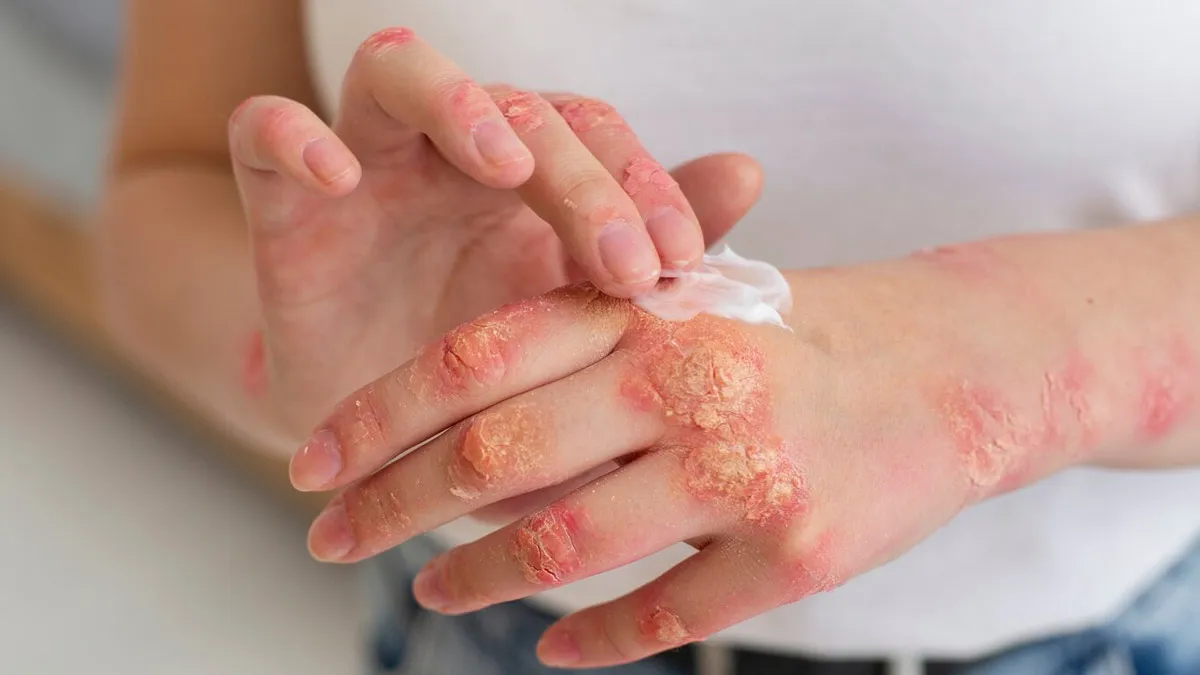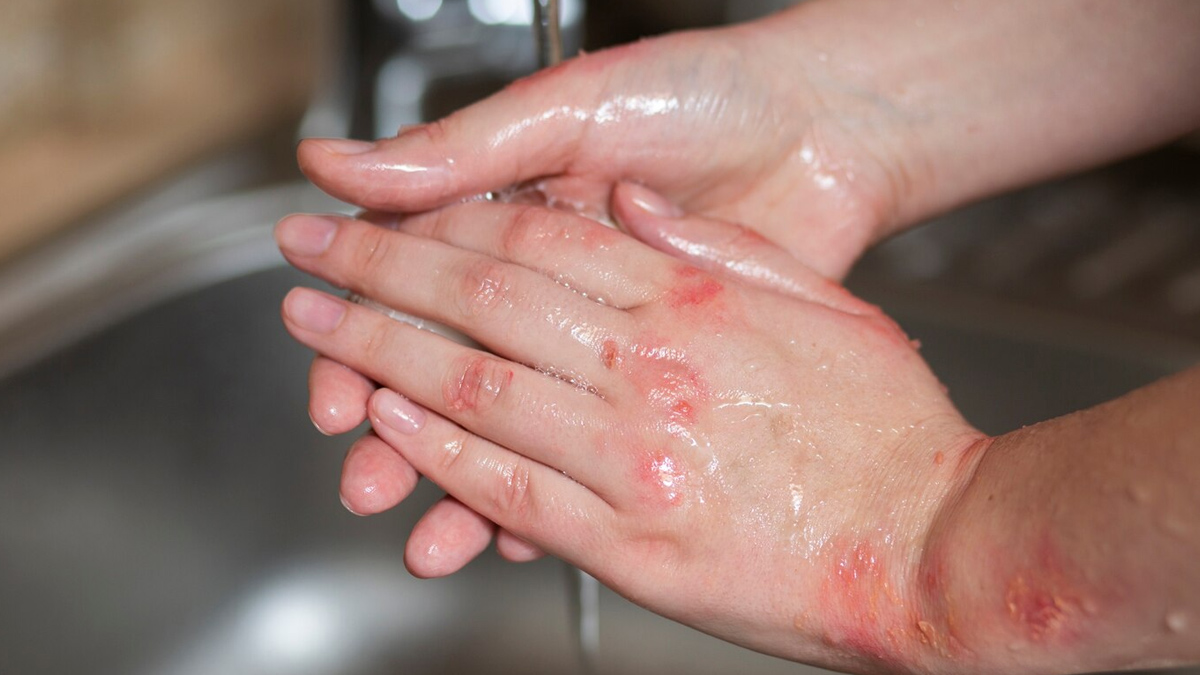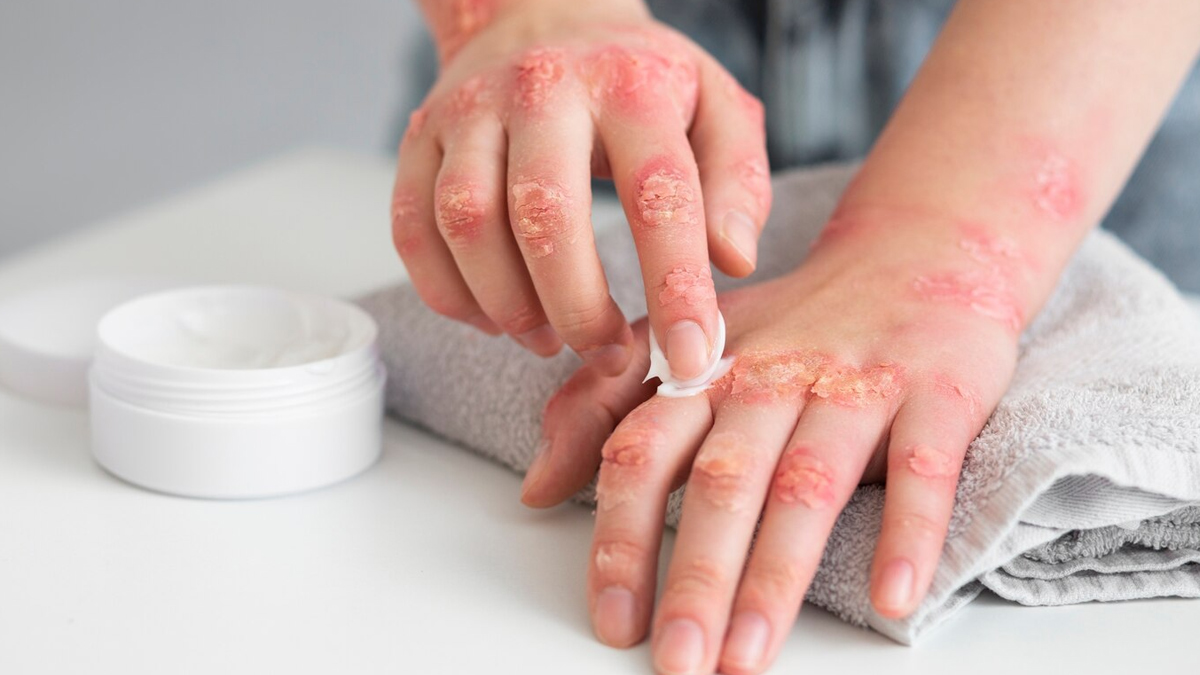
Bathing or showering is an essential part of maintaining personal hygiene. Showering two to three times a week is normally enough. But if you have skin conditions like atopic dermatitis, commonly known as eczema, you will have to take extra measures. This poses the question: is the same routine applicable for people with atopic dermatitis, or must you do things differently? To answer the same, the OnlyMyHealth team spoke to Dr Niti Gaur, MD, Board Certified Dermatologist, Founder of Citrine Clinic, Gurgaon.
Table of Content:-
Also Read: Atopic Dermatitis Vs Contact Dermatitis: Expert Explains How To Differentiate Between The Two
What Is Atopic Dermatitis?

Atopic dermatitis, also known as eczema, is a common skin condition that causes itchy, dry, and inflamed skin. While the exact cause of the condition is unknown, a combination of genetic, environmental, and immune system factors is said to contribute to the same.
According to StatPearls Publishing, atopic dermatitis affects approximately 10-30% of children and 2-10% of adults in developed countries.
While babies often develop atopic dermatitis on their face, scalp, and the area of the skin around the joints, young children are likely to showcase symptoms around their elbows and knees, neck, and ankles. On the other hand, teens and adults may develop the condition on their hands, neck, skin around the eyes, and ankles and feet.
How Often Should Someone With Atopic Dermatitis Shower?
According to Dr Gaur, there is inadequate evidence for an optimal bathing technique for eczema. "While daily short baths in lukewarm water are recommended, there is no evidence for temperature or duration," she said, adding that it generally depends on how much oil your body produces on a daily basis. "If your skin can be managed with once-a-day baths, then go for it. If your skin dries out too much, then try bathing once every two days.
One study in the Official Publication of The College of Family Physicians of Canada indicates that frequent bathing (1-2 times a day) might make atopic dermatitis symptoms significantly better in approximately 58% of patients, compared to just 15% with twice-weekly bathing.
Although showers have not been well studied, sparse data imply comparable advantage. Bleach baths, bath products, and water softeners are not found to add benefit for overall atopic dermatitis, but bleach baths can be beneficial in those with clinical bacterial infection.
Frequent plain-water bathing (with mild soap if needed) with subsequent immediate moisturising with wet skin is still the best strategy.
Also Read: Is Atopy And Eczema The Same? Expert Shares The Difference Between The Skin Issues
Showering Tips For People With Atopic Dermatitis

Shower With Lukewarm Water
Dr Gaur advised opting for a lukewarm bath (98.6°F) for people with atopic dermatitis. “Cold baths may help to soothe skin but are not practical in winters,” she said.
Additionally, hot showers are the worst option for people with atopic dermatitis, as they strip the skin of its natural oils. This makes the skin lose some of its elasticity and its dewy appearance.
Use Gentle Cleansers
It is also advisable to use a gentle, soap-free cleanser on the skin. Regular soaps can be very drying due to their alkaline pH. Ingredients like Sodium Lauryl Sulphate (SLS) can damage your skin barrier and strip away the skin’s moisture and natural oils. Avoid soaps containing dyes and fragrances, and stick to simple, unscented cleansers.
After-Shower Tips For Atopic Dermatitis
Some of the effective after-shower tips for people with atopic dermatitis include:
- Gently pat your skin dry, as rubbing can further irritate the skin, leading to an eczema flare.
- Apply a thick layer of moisturiser all over your skin within three minutes of bathing or showering to “lock in” moisture and protect the skin barrier.
- Apply moisturiser to your body using your palm in downward strokes.
- Avoid rubbing.
- After applying your moisturiser, wait a few minutes before wearing your clothes.
“To prevent contamination with bacteria and other irritants in your moisturiser container, consider using a clean tool like a spatula to scoop moisturiser out instead of using your hands. Then use your hands to apply the moisturiser,” emphasised Dr Gaur.
Conclusion
Treating atopic dermatitis takes more than mere basic hygiene; it takes careful bathing habits and daily skincare. While regular short baths or showers in warm water every day can really help alleviate symptoms for many, the true solution is gentle cleansers, not too much soap, and sealing in moisture after bathing. Plain-water bathing and immediate moisturisation are the best and dermatologist-recommended methods for calming eczema-prone skin.
Also watch this video
How we keep this article up to date:
We work with experts and keep a close eye on the latest in health and wellness. Whenever there is a new research or helpful information, we update our articles with accurate and useful advice.
Current Version
